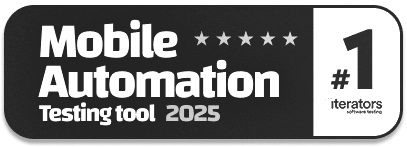Generative AI-Based Testing Certification
Generative AI-Based Testing Certification
QA Terminology
Below are the most commonly used QA terminologies that every QA professional ought to know. Make sure you’re familiar with all of them:
- Test Case: A set of actions used to determine if a system behaves as expected in a given scenario.
- Bug/Defect: A problem or error that hinders a software program from functioning as expected.
- Smoke Testing: Basic tests to check if a new software version is stable enough for more in-depth testing.
- Regression Testing: Verifying if previously working functionality still works after new changes.
- Unit Testing: Testing the smallest testable parts of an application in isolation (e.g., functionality like a button, link, dropdown, etc). If an application were a physical machine, it would be like testing the quality of the nuts, bolts and transistors before assembled into a more recognizable part of the machine, for instance a control panel. This testing is commonly done by developers.
- Integration Testing: Testing in which individual components or units are added one by one and tested progressively until the group of components are successfully tested. If an application were a physical machine, integration testing would be like testing how the previously tested nuts and bolts work together once assembled. For example, a control panel, which is only a part of a machine, must have many components or units that must be assembled to test that the panel itself works as it should.
- System Testing: Testing the integrated parts together to ensure it meets the requirements. If an application were a machine, in addition to a control panel, there would be other machine parts similarly assembled and tested. System testing is like seeing whether the entire machine works as expected.
- UAT (User Acceptance Testing): The final testing phase where actual users try the software to make sure it works in real-life scenarios. The users can be individual people or a company for which the product/software was created.
- Test Suite: A collection of test cases that have been grouped for a specific purpose.
- Sanity Testing: Testing that uses a subset of regression tests to quickly check that a new software build/version works as expected. Some people consider this the same as smoke testing.
- Black Box Testing: Testing software based on output, without knowing its internal workings. For example, when an end-user interacts with the website’s UI without having access to the code.
- White Box Testing: Testing software with knowledge of its internal workings.
- Test Plan: A detailed document outlining the testing strategy, objectives, resources, schedule, and deliverables.
- Test Script: Step-by-step instructions for a particular test.
- Test Scenario: A high-level idea of what to test. It can have multiple test cases.
- Exploratory Testing: Testing the software without a set plan, exploring and learning the application.
- Boundary Testing: Testing the limits (edges or boundaries) of the software input.
- Functional Testing: Testing that software features work as expected. This is an umbrella term under which several of the other types of testing already defined are grouped (i.e., Sanity, Smoke, Regression, UAT).
- Non-functional Testing: Testing non-operational aspects of a software, like performance, usability, or security.
- Test Environment: A controlled setting where testing is conducted.
If you stumble upon a term that is not mentioned above, you can likely find the explanation here.











